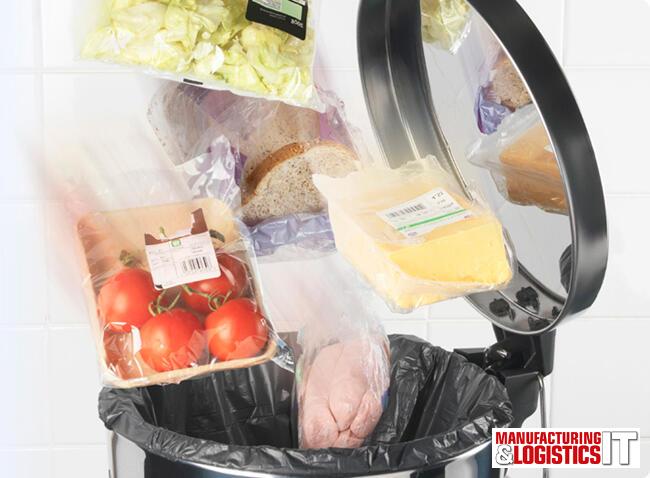By Terry Myers, CEO Infratab, Inc.
Farmers are starting to rethink spoilage. Climate change, increasing land, water, labour costs, and new laws are forcing greater efficiency in harvest, cooling, and distribution, not only to prevent spoilage, but to maximise profitability.
Traditional practices of sending more products than ordered and writing off a percentage due to spoilage or refused shipments is less affordable and less acceptable in terms of the investment made to produce it. Global food shortages also demand for better care and distribution. Addressing pre-consumer spoilage represents not only captured profit but a competitive advantage. Forward-thinking companies are embracing new technologies to better position themselves for ongoing profitability.

In 2015 a report by the UK Waste & Resources Action Programme (WRAP) highlighted the monetary benefits of reducing food waste. The report predicts that by reducing waste from 20 to 50 per cent could save the industry between $120 billion to $300 billion. The US and Europe are responsible for approximately 60 per cent of all food wasted with an average 21 per cent of this waste arising from spoilage.
Additionally, fresh fruits and vegetables make up around 50 per cent of waste, due to their sensitivity to heat and other external conditions post-harvest, and their requirement for constant refrigeration to maintain freshness.
However, spoilage is happening at a much earlier stage of the supply chain, and sometimes in ways that farmers are unaware of because damage isn't always obvious until it is too late. It shows up as food that spoils before it reaches the grocery store, or immediately upon purchase by the consumer.
How does spoilage happen?
For producers handling perishable goods, one of the most significant challenges is keeping produce at optimum conditions. This is made even more challenging as the food makes its way through the various stages of the supply chain. At each step there is potential for a slight change in condition that could significantly reduce the shelf life of the produce. It could be left out of refrigeration for too long, sat in the sun or be stored in a truck with broken or uneven refrigeration.
The industry needs a trusted, secure way to document temperature handling, a condensed and accurate expression of temperature data for quality assessments at receiving, and a traceable format that is compatible with reporting requirements.
Embracing smart sensors
In the past 10 years, product managers have begun using temperature loggers in trucks and shipping containers to ensure quality temperature handling. In a two-step approach that is both time consuming and costly, loggers record temperatures in the truck or container and are collected upon arrival at their destination, where data is downloaded and read. However, there isn't enough time in the receiving window to fully assess the temperature history before shipments are accepted or rejected. Reports can be slow to generate, and need evaluation to determine product quality. Visual inspections don't always reveal damage. Shelf life isn't known and complete confidence in the product can be elusive.
Smart sensors are changing that uncertainty, because they travel with goods and calculate shelf life in real time. Product managers obtain data and reports that give freshness grades in terms of hours or days remaining. With this product-specific information, they can pay by freshness upon receipt, redirect shipments for quicker sale, manage inventory for freshness on the store shelf (following a first-expired, first-out inventory routine, instead of first-in, first-out). In short, they can maximise the value inherent in the goods received.
Because traditional loggers monitor the truck or the container and do not stay with the product for its entire journey through the cold chain, it can be difficult to gauge at which step an incident occurred that reduced the quality of the food. Flawed tracking essentially breaks the chain of responsibility and makes a guessing game of clarifying a food's shelf life. Sensor tags that travel with produce maintain the chain of responsibility because they can be configured to monitor changes in custody as well as time and temperature. They assure that products haven't been tampered with, and reflect product temperature accurately because they stay directly with the product.
Transparency; the documentation of where a product has been, who has touched it, the processes and temperatures to which it has been subject, establishes accountability. It's essential to curtailing foodborne illness outbreaks, and for isolating profit leaks in the cold chain. Some view the need for transparency as burdensome and invasive. To forward-thinking companies, however, it's an opportunity for brands and individual growers, regardless of their size, to distinguish product based on quality. Quality creates the basis for better prices, because product consistently lasts as long as product managers and sell-by dates say it will. If care has been taken in other quality areas, product stability allows the consumer full enjoyment.
In this brave new world of growing food for a planet quickly realising its limits, pre-consumer handling of food reveals a paradigm that has valued cheaper-faster-better over quality, transparency, security, reliability and accuracy. Consumers are asking for the latter, and regulations are requiring it.

Add a Comment
No messages on this article yet